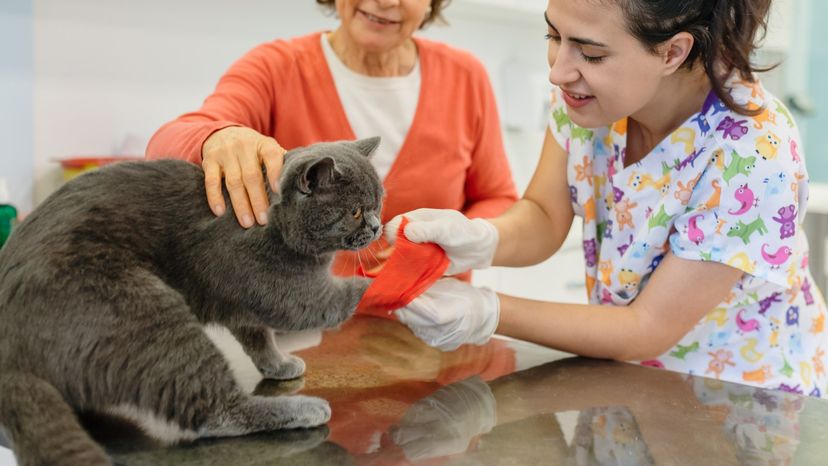
A broken leg can be tricky to diagnose on a cat, but it's important to know how since cats are naturally curious and can get into everything. Some of the signs to look for include a cat leg that hangs limply or that cannot support body weight; sudden onset of pain in the leg area; and swelling. Also watch for signs of shock, which include pale or white cat gums, rapid heartbeat, and breathing.
With cats, as with human beings, all bones are subject to breakage, but leg fractures are by far the most common. It is important to remember that cats have a high pain tolerance, and often a dangling leg seems to cause no pain. Therefore, don't be afraid to handle the fractured limb, but it's important to be gentle. If you have a cat that has suffered a broken leg, use the following tips to administer the proper cat care:
Advertisement
Step 1: Approach the cat carefully. If the cat seems nervous or anxious, restrain the cat if necessary.
Step 2: Examine the leg and determine if the fracture is open (wound near the break or bone protuding from the skin) or closed (no break in the skin).
Step 3: If the fracture is closed, proceed to Step 4. If the fracture is open:
Step 3a: Flush the wound thoroughly with clean water. Do not use any other antiseptic.
Step 3b: Cover the wound with a clean cloth, sterile dressing, or sanitary napkin.
Step 3c: Wrap torn rags or other soft material around the dressing and tie or tape just tightly enough to keep it in place.
Step 3d: Do not attempt to splint the fracture. Hold a folded towel under the unsplinted limb and transport the cat to the veterinarian immediately.
Step 4: If the fracture is closed:
Step 4a: It is difficult, if not impossible, to try to splint a cat's fractured limb without a veterinarian. The goal in any fracture is to minimize the movement of the broken bones.
Step 4b: Place the cat in a carrier or box and transport him or her to the veterinarian immediately.
©Publications International, Ltd.
Advertisement